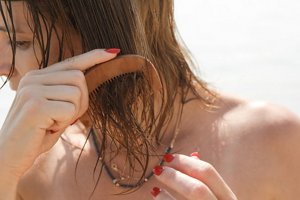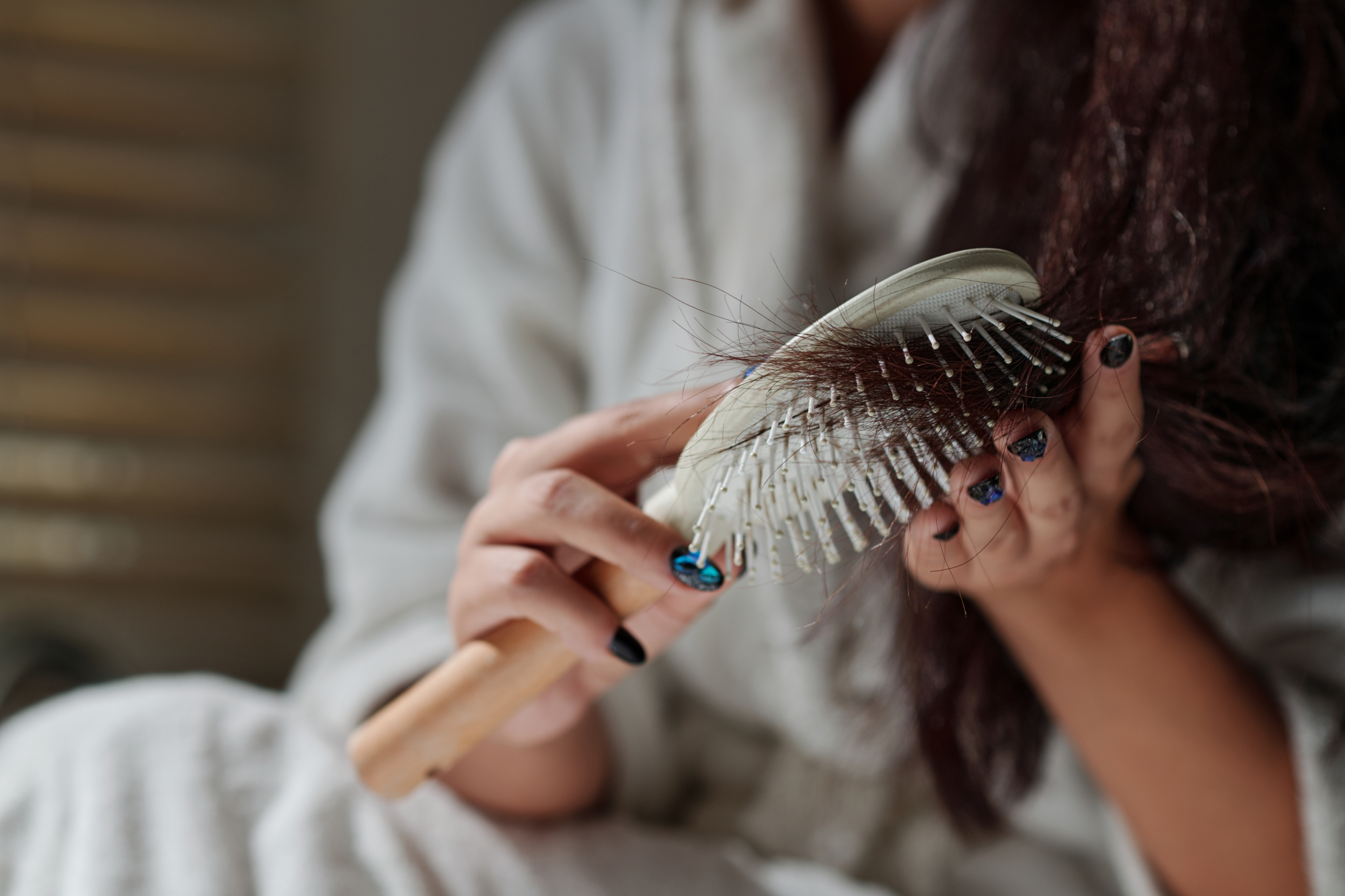WHAT IS HAIR BREAKAGE?
Hair breakage is when your hairs begin to snap while brushing, styling or washing, and start to lose their healthy sheen.
It’s important to remember that fixing hair breakage is a process – you can’t mend individually-broken strands. The best thing you can do to stop your hair breaking is go for a trim to get rid of as much damaged hair as you’re comfortable with, then follow our advice below.
Here’s our full guide to hair breakage – from the causes and treatments, to regrowing thin, broken hair.
What does hair breakage look like?
Signs of hair breakage include:- Frizzy, dull hairs in your hairbrush or comb after brushing
- Split ends
- White spots on individual hairs (they’re easier to spot on brunette hair)
- Ragged, thinning ends
- Strands on either side of your head appear to be different lengths
- Dull, frizzy hair

What causes hair breakage?
Your broken hairs may be a result of a combination of the following issues:- Rough, aggressive brushing – especially when your hair’s fragile and wet
- Using products which aren’t suitable for your hair type – especially if you have thick hair which needs extra hydration
- Wearing your hair in severe styles, such as tight ponytails or braids
- Excessive heat styling without heat protection
- Bleaching or over-colouring your hair
Is hair breakage the same as hair loss?
You can spot the difference between hair loss and hair breakage by examining the hairs that you lose. Hairs that have naturally reached the shedding stage and fall out because of hair loss will still have the root attached.To feel for the root, gently pinch the strand and pull it through your fingers. The root will feel like a tiny bump at one end of the hair. Hairs lost due to hair breakage may be shorter, and will have no root attached - they’ll also likely feel frizzy, coarse and look dull.
If you’re worried about losing too much hair, try this simple test to see if you’re shedding more than you should be. Take a small piece of hair - around 50-60 strands - and pull them gently at the ends. Losing around 2-5 strands is normal; more than 15 may be a cause for concern.

Products to disguise hair breakage
One of the easiest and simplest ways to hide hair breakage is to use products which help to plump thin, fragile hair.- Start with a thickening shampoo. Our PROfiller+ shampoo with biotin and hyaluronic acid builds strength and thickens your hair, leading to natural movement with boosted volume
- Our PROfiller+ conditioner is the perfect post-wash accompaniment – it hydrates to reduce hair loss, breakage, and thicken hair by 200%*
- Finish with PROfiller+ Thickening Spray – spray throughout towel-dried hair, focusing on your roots. This double-duty styling spray provides heat protection and reduces hair loss due to breakage
How to repair damaged hair
Remember that disguising and then fixing damaged hair takes more than just products – and there’s plenty you can do to help repair stressed, tired hair.- Be gentle when you brush and style your hair
- Use a heat protection spray if you use heat styling tools
- Invest in a silk pillowcase or a silk bonnet to protect your hair from friction while you sleep
- Use an overnight hair treatment to re-add moisture at night
- Address split ends when they happen – book yourself in for regular trims
- Avoid hairstyles which pull on your hair – an updo or low ponytail reduces tension on your scalp, and can normally hide breakage fairly well
Is thin hair more prone to breakage?
Split ends and breakage can be more noticeable if you have thin hair – it tends to be weaker and can't take as much styling and rough brushing as medium or coarse hair can.However, natural curly hair can also be prone to breakage as it’s more difficult for the scalp’s natural oils to travel down the hair shaft, making curly hair more vulnerable to dryness, frizz and breakage.
How long does broken hair take to grow back?
There’s no one-size-fits-all answer to how long broken hair takes to regrow - it all depends on the starting length of your hair. People with cropped hair or bobs may see improvements faster than people with longer lengths.You’ll see an improvement straight away after a haircut, but generally, it can take 6-8 weeks for hair to respond to new treatments and gentler styling, depending on the length of your hair and the extent of the damage.


.jpg)

